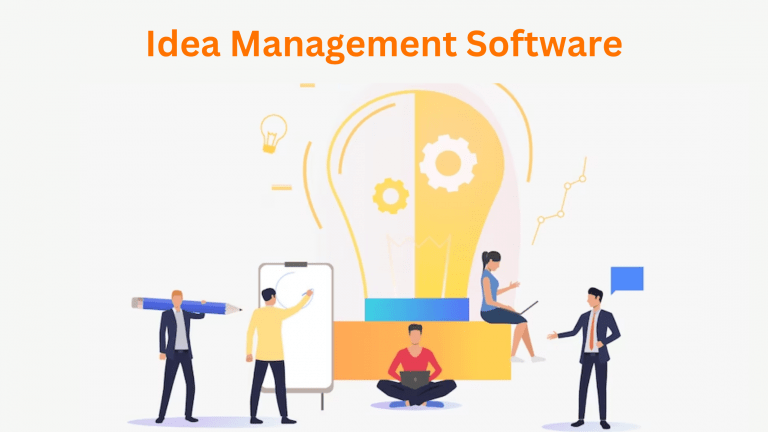In today’s high-velocity business environment, innovation has transcended its traditional role as a growth lever—it is now an operational imperative. As markets shift, technologies evolve, and customer expectations intensify, organizations must institutionalize innovation to remain viable. Innovation management tools have emerged as a strategic solution, enabling enterprises to operationalize creativity and align it with business performance.
This executive briefing explores how these tools unlock innovation at scale, reviews market-leading solutions, and offers a business-oriented framework for tool selection.
Strategic Purpose of Innovation Management Tools
For business leaders, the fundamental question is not whether to innovate, but how to do so with consistency, speed, and relevance. Innovation management tools provide the structured infrastructure needed to translate ideation into impact. More than software, these platforms serve as engines for strategic alignment, cultural engagement, and performance accountability.
Business-Critical Capabilities Include:
- Enterprise-Wide Ideation: Captures insights from diverse internal and external sources, driving inclusive innovation.
- Strategic Prioritization: Enables leadership to assess and invest in ideas with the greatest ROI potential.
- Execution Discipline: Integrates with project delivery systems to ensure innovation moves beyond concept.
- Performance Visibility: Offers data-driven insights into innovation pipelines, adoption rates, and commercial outcomes.
The value proposition is clear: innovation becomes repeatable, measurable, and scalable.
Key Business Criteria for Tool Evaluation
Innovation tools vary in scope and sophistication. Selecting the right platform requires aligning tool capabilities with business objectives and organizational readiness.
Strategic Evaluation Dimensions:
- Lifecycle Maturity: Tools should support innovation from opportunity identification through implementation and post-launch impact tracking.
- Configurability: Business units should be able to tailor use cases—whether for product, process, or business model innovation.
- Cultural Fit: Tools must support engagement models aligned with organizational behavior and incentives.
- Integration Ecosystem: Seamless interoperability with core business platforms (ERP, CRM, PLM) is essential.
- Insight Generation: Real-time analytics and benchmarking to inform strategic decisions and investments.
A well-matched tool doesn’t just support innovation—it advances business transformation.
Market Leaders: Solutions with Proven Business Value
Below is a strategic overview of platforms recognized for driving innovation outcomes across industries:
| Platform | Strategic Differentiator |
| ITONICS Innovation OS | AI-enhanced foresight for proactive opportunity sensing and strategic planning. |
| Planview IdeaPlace | Connects ideation with portfolio management to drive enterprise-level impact. |
| Brightidea Innovation Cloud | Scalable innovation engine with deep analytics for program optimization. |
| IdeaBridge | Empowers team-based problem solving and agile idea implementation. |
| Sideways 6 | Integrates with daily tools to foster grassroots, employee-driven innovation. |
| Planbox Agile Innovation Suite | Ecosystem-centric innovation with rapid experimentation and partner collaboration. |
| Ideanote | Streamlined experience for high-velocity ideation and innovation sprints. |
| Qmarkets | Enterprise-grade platform with robust governance and process controls. |
| Agorize | Specializes in external innovation through open challenges and co-creation. |
| edison365 | Microsoft-aligned innovation suite with native integration for rapid enterprise adoption. |
These platforms are not one-size-fits-all; rather, their impact depends on aligning platform capabilities with strategic use cases and organizational design.
Business-Led Approach to Tool Selection
Business insight leaders should drive the tool selection process in collaboration with IT, HR, and strategy functions. The goal is to enable innovation as a core competency—not a siloed initiative.
Considerations for Strategic Fit:
- Innovation Mandate: Is the focus disruptive innovation, continuous improvement, or cultural change?
- Stakeholder Engagement: Will the tool foster broad participation across functions and geographies?
- Resource Commitment: Is there executive sponsorship and budget for long-term enablement?
- Data Strategy Alignment: How does the platform support measurement, feedback loops, and learning?
- Risk and Compliance: Are IP protection, data security, and regulatory factors accounted for?
The right solution is one that complements business ambition with operational feasibility.
Executive Outlook: Innovation as a Core Operating System
Innovation cannot remain episodic or personality-driven. For organizations to thrive, innovation must become systemic—embedded in how decisions are made, resources allocated, and performance measured. Innovation management tools provide the digital backbone for this transformation.
Forward-thinking organizations that invest in the right platforms are better positioned to:
- Anticipate market shifts before they materialize
- Engage talent and partners in meaningful co-creation
- Accelerate time-to-market for differentiated offerings
- Optimize portfolio value and de-risk strategic bets
As innovation becomes a boardroom-level agenda, tools that enable execution at scale will separate industry leaders from laggards.
This analysis reflects current trends and platforms as of April 2025. Business leaders are encouraged to supplement this insight with live platform demos, customer success case studies, and third-party analyst benchmarks.

